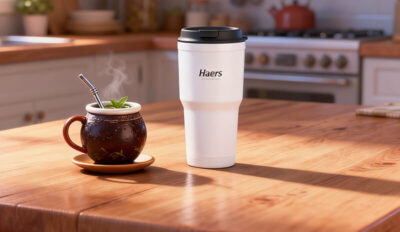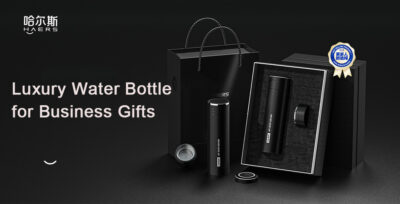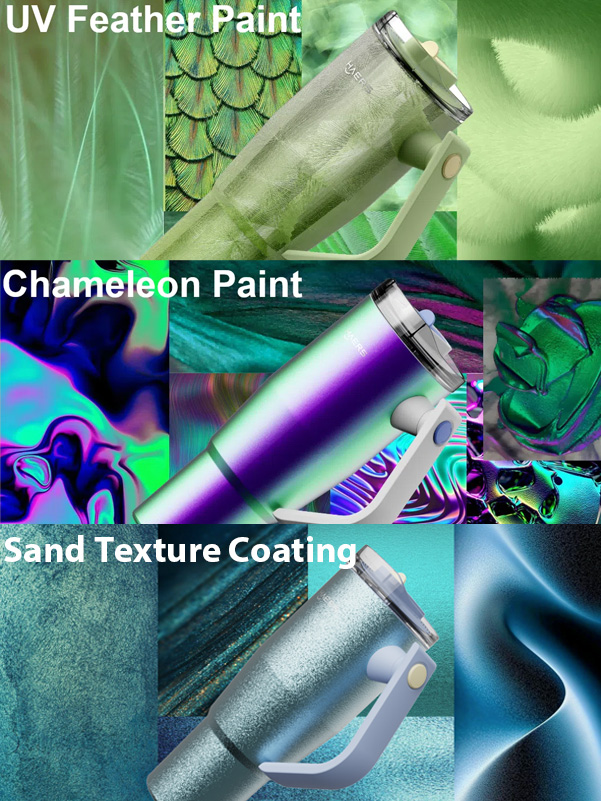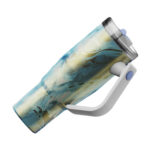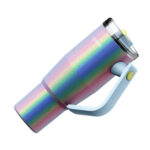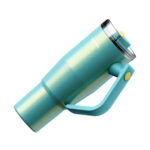Can I Drink Creatine out of a Metal Water Bottle
Creatine is a staple supplement for fitness enthusiasts and high-intensity athletes, offering that extra edge for strength, endurance, and muscle recovery. As we gear up for our next workout or race, creatine powder storage and proper mixing become just as important as the supplement itself. Many of us naturally reach for our trusted metal water bottle—often a high-quality food grade stainless steel bottle or another BPA-free metal water bottle—to carry our hydration and supplements on the go.
But when it comes to can I drink creatine out of a metal water bottle or is it safe to mix creatine in a metal water bottle, doubts about creatine stability in metal bottles and potential interactions with stainless steel creatine drinkware can arise.
Table of Contents
ToggleProperties of Creatine
Creatine is a naturally occurring compound composed of three amino acids—arginine, glycine, and methionine—that plays a critical role in rapid energy production within muscle cells. When we dissolve creatine powder, it forms a solution where creatine monohydrate remains relatively stable under neutral pH and cool temperatures. However, exposure to heat, light, or prolonged storage can accelerate creatine degradation in solution, converting it into creatinine, an inactive byproduct. Understanding these molecular behaviors is essential for effective creatine powder storage and maintaining optimal creatine stability in metal bottle or any other container.
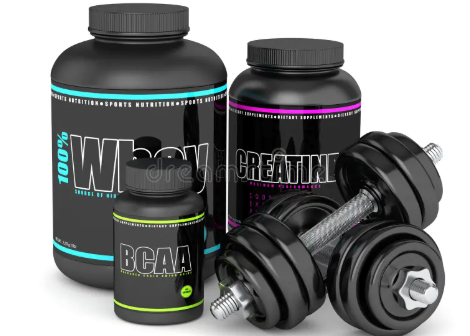
While choosing a 304 stainless steel supplement drinkware or a metal water bottle, we also consider factors such as thermal conductivity and inner surface finish. A high-quality food grade stainless steel bottle resists corrosion and won’t leach chemicals, so it’s generally safe to drink creatine from stainless steel bottle even after extended mixing. Yet, questions like “will creatine degrade in stainless steel water bottle” or “how long does creatine last in water bottle“ remind us that for peak potency, we should consume our mix within a few hours.
By grasping these basic properties, we can confidently say whether I can drink creatine out of a metal water bottle without sacrificing supplement quality.
Who Would Use Metal Water Bottles for Mixing Creatine
Below are common scenarios and user groups who reach for a metal water bottle—often a plastic creatine container—to mix and carry their creatine supplement:
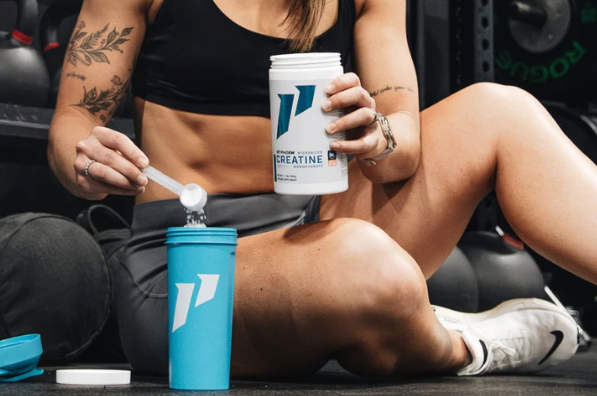
Gym-Goers and Bodybuilders
Pre-workout shake on the way to the gym
Quick creatine boost between superset rest periods
“Is it safe to mix creatine in a metal water bottle” worries are minimal with a high-quality food grade stainless steel bottle.
Endurance Athletes (Runners, Cyclists, Swim Teams)
Mid-race or long-ride creatine sip to sustain ATP production
Lightweight BPA free water bottle fits seamlessly into hydration packs
Office Professionals and Students
Discreet supplement dosing at the desk or in lecture halls
Using the leak-proof plastic bottle to store the creatine supplement to maintain potency during a busy day
Outdoor Enthusiasts (Hikers, Campers, Climbers)
Durable metal container withstands rough handling
Temperature stability ensures creatine stability in metal bottle even in changing climates
Travelers and Commuters
Airport-friendly, leak-proof plastic supplement container
Quick mix before boarding, with confidence that will creatine degrade in stainless steel water bottle is unlikely over short durations
Each scenario leverages the durability and inert nature of stainless steel, making it a go-to choice for those asking, “can I drink creatine out of a metal water bottle?”
Best Practices for Mixing Creatine in a Metal Water Bottle
To ensure both safety and effectiveness when using a metal water bottle for your creatine supplement, following a few key practices can help maintain creatine stability in a stainless bottle and prevent degradation:
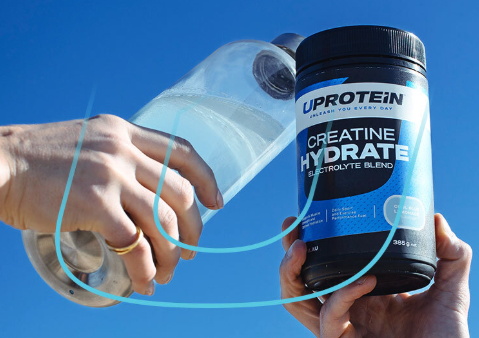
Use Warm (Not Hot) Water for Mixing
Creatine dissolves more efficiently in warm water around 30–40 °C. This temperature range is gentle enough to avoid accelerating creatine degradation in solution, while helping the powder dissolve quickly and evenly. Avoid using water hotter than 60 °C, as high heat can break down creatine into creatinine, reducing its effectiveness.
Consume Within 12 Hours
To keep your supplement potent, it’s best to drink the mixture within 12 hours. Even in a high-quality food-grade stainless steel bottle, creatine can slowly degrade over time—especially if left in a warm environment. So if you’re wondering, how long does creatine last in water bottle, the short answer is: not indefinitely.
Avoid Long-Term Storage of Mixed Creatine
Pre-mixing creatine and leaving it in your bottle for more than a few hours—especially overnight or longer—can lead to loss of potency. For convenience, keep the powder dry in yoursupplement container, and only mix shortly before use.
Clean and Dry Your Bottle Regularly
After each use, thoroughly clean your water bottle to prevent any bacterial buildup, especially in areas like the lid or silicone seals. Let the bottle air dry completely to keep it hygienic and ready for your next use.
Following these best practices ensures it’s safe to drink creatine from stainless steel bottle, while maximizing both hygiene and the supplement’s effectiveness.
FAQs
1. Can I mix multiple powdered supplements in a metal water bottle?
Yes, you can safely mix multiple powdered supplements—such as creatine, BCAAs, or protein powder—in a metal water bottle, provided it’s made from high-quality food grade stainless steel. These bottles are designed to resist corrosion and chemical reactions. However, always shake and consume the mixture promptly, as combining different powders can increase the rate of creatine degradation in solution if left for too long.
2. Can creatine powder be stored long-term in a water bottle?
It’s not recommended to store creatine powder long-term inside any water bottle, even a metal creatine container. While dry creatine is relatively stable, exposure to moisture, heat, or even condensation inside the bottle can trigger gradual breakdown. For best results, store your creatine in a sealed, cool, and dry metal supplement container, and mix only what you need. This prevents degradation and maintains potency, answering concerns like will creatine degrade in stainless steel water bottle and how long does creatine last in water bottle.
3. What if I’m allergic to metal—how should I choose a bottle?
If you have a known sensitivity or allergy to certain metals (like nickel), opt for a BPA-free plastic water bottle explicitly labeled as hypoallergenic or nickel-free. Look for bottles made from Tritan material, glass, which are generally well-tolerated. Using a powder-only method—where you store dry creatine powder separately and mix it only when ready to drink—can further reduce skin contact and exposure.
By understanding how to use your bottle safely and effectively, you can confidently answer the question: can I drink creatine out of a metal water bottle?—with a solid yes, when best practices are followed.




